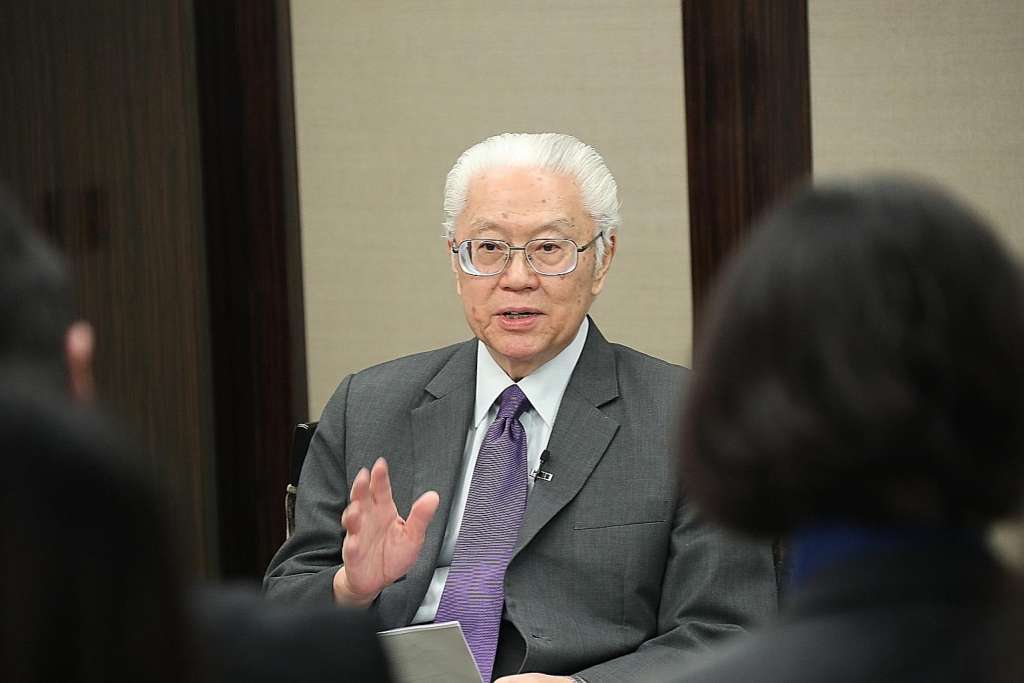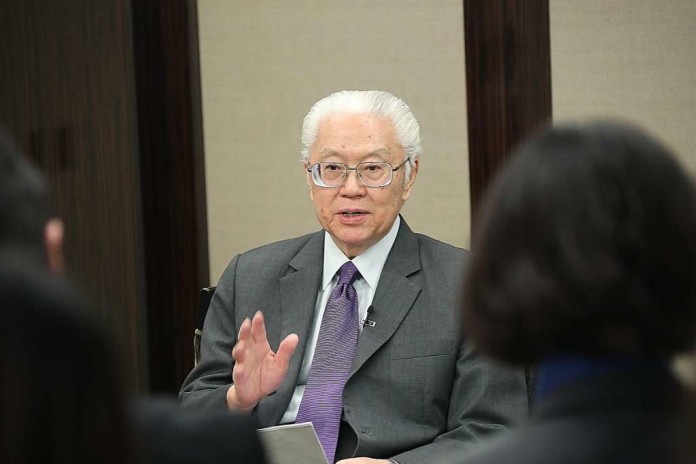Be it household chores or helping the elderly and disabled to walk, Japan is known for its “practical technology”.
“How technology is used is not something which (should be) abstract, but which helps people in their day-to-day lives,” visiting President Tony Tan Keng Yam told reporters yesterday.
And this is one area where Singapore can look to Japan as it confronts similar issues such as an ageing population, Dr Tan added, at the end of a nine-day state visit to mark 50 years of bilateral ties.
This extends to social causes to promote inclusivity, he added.
Japan’s Superhuman Sports Society, for example, has been modifying on-the-market equipment to make it easier for the elderly and disabled to stay active.
“We hope that we will not only add years to your lives, but we will add life to your years – so that no matter how old you are, you can still make a contribution,” Dr Tan said.
“The point is not to look at ageing as a liability, but as an asset and an opportunity.”
Another technology that Japan is known for is its shinkansen bullet trains, which Dr Tan rode on four times during this trip – to and from Tokyo, Kyoto and Sendai.
He came away impressed by the “very comfortable ride”.
“It was safe, reliable and efficient. The trains arrive and leave precisely on the dot – you can even set your clock or watch by it,” he quipped, adding that punctuality is one of its main selling points.
Japan has its eyes on the Singapore-Kuala Lumpur high-speed rail project, and Dr Tan said it is welcome to put in a strong and competitive bid when an international tender is called.
Technology is but one area which can help spur economic growth, Dr Tan said.
Trade is another, and he stressed that economic growth is not a “zero-sum game” in which the growth of one country will lead to another country losing out.
On this, both Japan and Singapore are on the same page: “The more we can see growth in our own country and in other countries, the better it is for everyone.”
Dr Tan noted how Prime Minister Shinzo Abe, whose country has faced years of slow to no growth, is “trying to stimulate the economy, and encouraging companies to increase salaries to get out of the deflationary trap. This will be good for us as well”.
Both countries, too, have reaffirmed the need to “work together to ensure that this trend of freer trade and liberalisation of our economies is not stalled or reversed”.
Japan and Singapore are members of the United States-led Trans-Pacific Partnership (TPP) and the China-led Regional Comprehensive Economic Partnership (RCEP).
The future of the 12-nation TPP, which covers 40 per cent of the world economy, is uncertain after Mr Donald Trump won the Nov 8 US presidential election.
He has said he will disavow the pact.
Dr Tan said yesterday that Japan and Singapore will ratify the TPP, while also hoping that RCEP negotiations can be concluded.
On the bilateral scale, Singapore is Japan’s first trading partner and their free trade treaty, established in 2002, is currently undergoing its third review to make it more open.
The formation of the Asean Economic Community last year also presents opportunities to Japanese firms, Dr Tan said, urging them to use Singapore as a hub to expand within South-east Asia and beyond.
Japan’s presence in Asean, too, is underpinned by the US-Japan security alliance, and Dr Tan welcomed Japan playing a greater role under this framework.
“We see them as being a contributor in helping to create a climate of stability and peace in this part of the world, and in the resolution of regional difficulties which are bound to arise from time to time.”
Meanwhile, Japan is also looking to Singapore in areas such as its SkillsFuture drive to promote active ageing, and its experience in integrated resorts and casinos.
On the latter, the Lower House passed a Bill to legalise casinos yesterday.
Dr Tan noted the interest among parliamentarians over what Singapore has done to “balance the economic benefits with social issues which could arise”.
President Tan on…
THE TRANS-PACIFIC PARTNERSHIP
Both Japan and Singapore do not see economic growth as a zero-sum game (where) if one country grows, another country will be disadvantaged.
The more we can see growth in our own country and in other countries, the better it is for everyone.
Japanese Prime Minister Shinzo Abe and I reaffirmed the importance of Japan and Singapore working together to ensure that this trend of freer trade and liberalisation of our economies is not stalled or reversed.
It’s happening in some countries and that’s not a good thing for us as a trading nation, for Japan as a trading nation.
Both of us are a little bit worried about the isolationist views which I think will retard the world from growing further, including for Singapore.
ASEAN
It is very important for the United States to be anchored in this part of the world and Japan is one of the main anchors here.
So under the framework of the US-Japan Security Alliance, we encourage Japan to play a greater role with Asean.
Japan is already a strong partner of Asean and we see them as being a contributor in helping to create a climate of stability and peace in this part of the world, and in the resolution of regional difficulties which are bound to arise from time to time.
THE HIGH-SPEED RAIL
I found the (shinkansen) a very comfortable ride. It was safe, reliable and efficient.
The trains arrive and leave precisely on the dot – you can even set your clock or watch by it!
The punctuality of the train, I think, is one of the main selling points.
Japan is interested in participating in the Singapore-Kuala Lumpur high-speed rail and we welcome them to put in a strong and competitive bid.
We’ll work with Malaysia – it’s a joint project – to have a process of evaluation which is open, fair and rigorous, and we welcome tenders from other countries as well.
Read also: President Tan urges S’pore firms to make mark in Japan

This article was first published on Dec 07, 2016.
Get a copy of The Straits Times or go to straitstimes.com for more stories.






